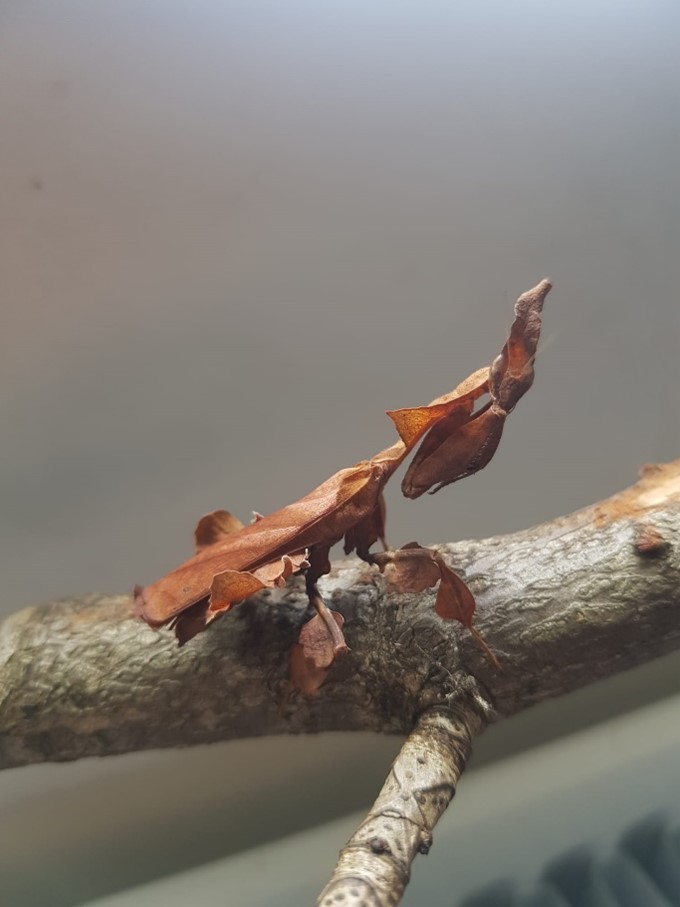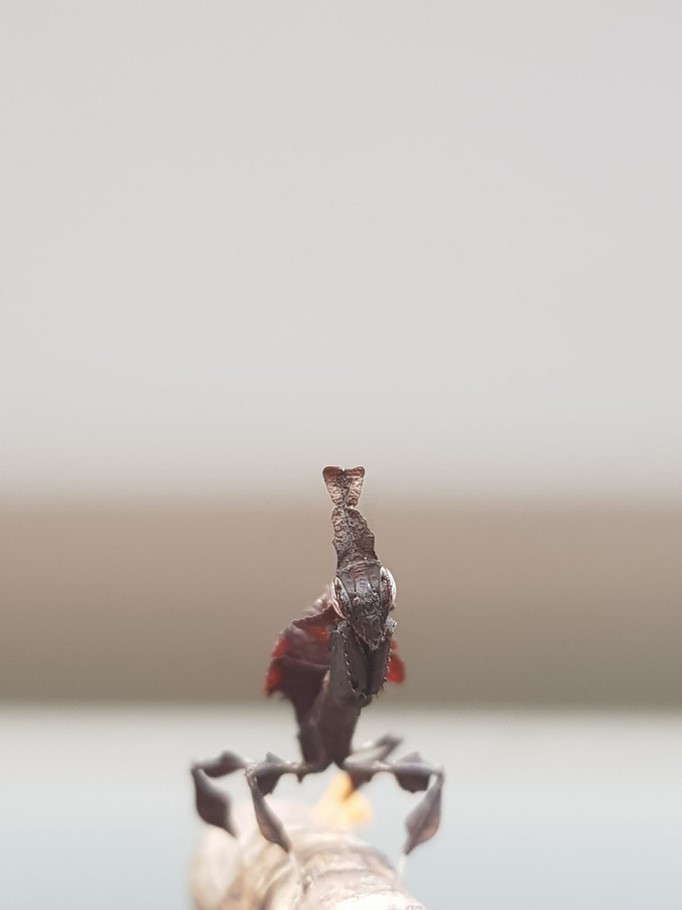General information
| Distribution | Africa and Madagascar |
| Habitat | Widely spread in dry & humid environments |
| Size | Female ~6cm Male ~5.5cm |
| Life expectancy | Female up to 1.5year Male up to 1 year |
| Colors | Black, brown/dull yellow and green, depending on surroundings and humidity. |
| Agressiveness | Low |
| Difficulty | Easy (perfect for beginners) |
| Group keeping possible | Yes, if always well fed. Cannibalism can still occur, especially with adult females. |
Keeping requirements
Terrarium size
-Individual keeping: from 15x15x15cm
-Group keeping: from 30x30x30cm (for 3-5 individuals)
Terrarium setup
-Soil: soil, sand, kitchen towel, coco peat, spagnum moss or a mixture.
-Climbing surfaces: Branches, live or plastic plants, mesh sides or a combination.
-Ventilation: Top ventilation, best to provide ventilation from the side as well.
Temperature:
Day: 20-28C
Night: Room temperature (drop under 18C no problem)
Humidity: Low, 30-50%, optionally higher but ventilation becomes more important then.
Spraying very lightly once a week can be beneficial.
Food recommendation
| L1 | Small or big fruitflies (Drosophila melanogaster or Drosophila hydei) |
| L2/L3 | Big fruitflies (Drosophila hydei) |
| L4/L5 | Curly wing flies/green bottle flies/big fruitflies (D. hydei) |
| L6 till adult | Green bottle flies, blue bottle flies, small crickets, redrunners, small dubias |
Sexing
In general: Praying mantises have segments on their abdomen(=belly). The amount of segments differs for males and females. This is a reliable method to use for sexing nymphs, the bigger they are the easier it is to see the difference.
You should always count the underside of the abdomen. Males will have 8 segments whilst females will only have 7.
Specifically for P. paradoxa: Phyllocrania paradoxa has a “crown” on top of their head. Males have a slender and ribbed crown, whilst the crown of the female is thicker and typicaly only has one curvature in the crown.
Breeding
Adult stage
Females will be adult at L8, Males at L7. Sometimes it can differ with unusual circumstances. Both males and females will have wings when they are adult. Males are capable of flying short distances.
Sexual maturity
Males will reach sexual maturity ~2 weeks after the final molt, females after ~3 weeks.
Oothecas & incubation
Oothecas will be elongated, light brown and around 2-5cm. Typically the ootheca will become darker once it gets closer to hatching. Usually it takes around 7/8 weeks for them to hatch at 22C. On average, around 30 nymphs are born. Females can lay oothecas every 7-14 days depending on food quantity, starting at 6 weeks after reaching adulthood. In total, one female can lay around 15 oothecas. The oothecas should be kept well ventilated, but sprayed approximately once a day.







